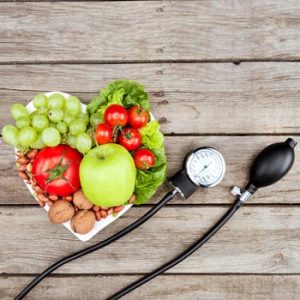
More evidence that low-calorie sweeteners are bad for your health
Studies show that artificial sweeteners can raise the risk of hypertension, metabolic syndrome, type 2 diabetes and heart disease, including stroke.

Natural Health News — Combining a low-salt diet with the heart-healthy DASH diet substantially lowers systolic blood pressure in people with high blood pressure.
The DASH (or Dietary Approaches to Stop Hypertension) diet, long promoted by the National Heart, Lung, and Blood Institute and the American Heart Association, is rich in fruits, vegetables and whole grains, along with low-fat or fat-free dairy, fish, poultry, beans, seeds and nuts.
While both low-sodium and DASH diets have long been known to prevent or lower high blood pressure, the new study was designed to examine the effects of combining the two diets in adults with early or modest forms of high blood pressure – those considered to be at greatest risk for developing more severe forms of hypertension known to increase the likelihood of stroke, kidney disease, heart attacks and heart failure.
Results of the randomized clinical trial involving more than 400 adults with prehypertension, or stage 1 high blood pressure, was conducted by researchers at the Johns Hopkins University School of Medicine, and published in the Journal of the American College of Cardiology.
» US researchers have found that a combination of a heart healthy diet and a reduction in daily salt intake can significantly reduce high blood pressure.
» Most established medications on the market, such as ACE inhibitors, beta-blockers, or calcium channel blockers, on average reduce systolic blood pressure by 10-15 mm Hg.
» The diet low salt combination, especially in those with the highest blood pressure reduced systolic pressure by 10-21 mmHg.
For the study, investigators tested and followed 412 adults, including 234 women, ranging in age from 23 to 76 years and with a systolic blood pressure of 120-159 mm Hg and a diastolic blood pressure between 80-95 mm Hg (i.e., prehypertension or stage 1 hypertension). Fifty-seven percent of the participants were African-American.
At the start of the study, none of the participants was taking antihypertensive drugs or insulin, none had a prior diagnosis of or current heart disease, renal insufficiency, poorly controlled cholesterol levels or diabetes.
Investigators put all participants on the DASH diet or a control diet for 12 weeks. The control diet was similar to that of a normal American diet based on the average macronutrient and micronutrient profile of the US population.
Getting to grips with salt
All participants were also given either 50 (low), 100 (medium) or 150 (high) mmol/day of sodium, in random order over four-week periods. Fifty mmol/day is equivalent to 1,150 mg of sodium.
A diet that includes 100 mmol/day of salt is equivalent to 2,300 mg of sodium – or nearly a teaspoon of salt. This is the maximum level of sodium intake recommended by the US Food and Drug Administration (FDA) and is thought to reduce the risk for heart disease and stroke.
At the time of the study, according to the National Health and Nutrition Examination Survey, Americans consumed about 150 mmol/day of sodium, which is considered by the FDA to be harmful and may increase a person’s risk for high blood pressure, heart disease and stroke.
A winning combination
After four weeks, the investigators found that those who began the study with 150 or greater systolic blood pressure on just the DASH diet had an average of 11 mm Hg reduction in systolic blood pressure compared to a 4 mm Hg reduction in those solely on the DASH diet, but whose baseline systolic pressures were at the lower end of the scale at less than 130.
When the researchers combined the DASH diet with the low-sodium diet and compared participants’ blood pressures to those on the high-sodium diet, they found that those with less than 130 systolic blood pressure at the beginning had a 5 mm Hg reduction in systolic blood pressure; those with 130-139 mm Hg baseline systolic blood pressure had a 7 mm Hg reduction; and those with baseline systolic blood pressure between 140-149 had a 10 mm Hg reduction.
Most surprisingly, say the researchers, a participant who had a baseline systolic blood pressure of 150 or greater and was consuming the combination low-sodium/DASH diet had an average reduction of 21 mm Hg in systolic blood pressure compared to the high-sodium control diet.
Diet beats drugs
“Our results add to the evidence that dietary interventions are as effective as – or more effective than – antihypertensive drugs in those at highest risk for high blood pressure, and should be a routine first-line treatment option for such individuals,” says researcher Stephen Juraschek, M.D., an adjunct assistant professor at Johns Hopkins and an instructor of medicine at Harvard Medical School.
To put the potential impact of the findings into context, Juraschek says, the FDA requires any new antihypertensive agent submitted for approval to lower systolic blood pressure by 3-4 mm Hg. Most established medications on the market, such as ACE inhibitors, beta-blockers, or calcium channel blockers, on average reduce systolic blood pressure by 10-15 mm Hg.
“This is outstanding, it’s huge,” says Juraschek, because it suggests that those at highest risk for serious hypertension achieve the greatest benefit from the combination diet.
“What we’re observing from the combined dietary intervention is a reduction in systolic blood pressure as high as, if not greater than, that achieved with prescription drugs,” says senior study author Lawrence Appel, M.D., M.P.H., professor of medicine at the Johns Hopkins University School of Medicine. “It’s an important message to patients that they can get a lot of mileage out of adhering to a healthy and low-sodium diet.”

Please subscribe me to your newsletter mailing list. I have read the
privacy statement